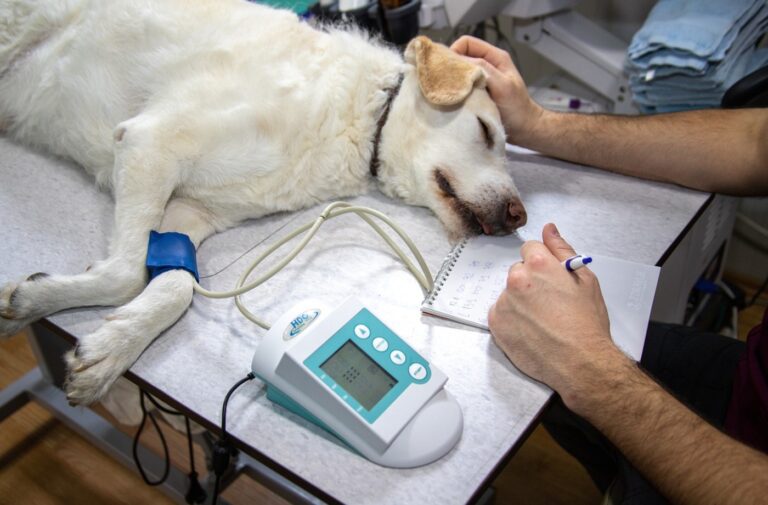Caring for a pet often feels like a partnership, but things can get tricky when behavioral problems arise. Managing these issues can be stressful for any pet owner, whether incessant barking, chewing on your furniture, or unexpected aggression. Even more daunting is doing it without breaking the bank. Don’t worry—handling pet behavioral problems on a budget is possible with informed and practical solutions. Let’s explore how you can address these challenges without overspending while fostering a happy and loving relationship with your furry friend.

Photo by Yuliya Kota
Understanding the Root Causes of Pet Behavioral Problems
Decoding what’s behind your pet’s unusual actions can feel like solving a mystery. Knowing what triggers the behavior offers the first step toward finding affordable solutions.
Health-Related Causes
Not all behavioral issues stem from bad habits; sometimes, they’re linked to a pet’s health. For example, a dog that starts growling during grooming could be dealing with joint pain or skin irritation. Routine vet checkups might seem like a splurge, but identifying and treating medical issues saves long-term expenses and ensures your pet’s well-being. You can check resources like the ASPCA’s guide for advice on interpreting pet behavior through a health-focused lens.
Environmental Triggers
Sudden changes, like moving to a new home or welcoming a new family member, often upset pets. Such changes can lead to developed anxiety or destructive habits. Creating a comfortable, predictable environment (even with low-cost items like a cozy blanket or DIY calming sprays) can help your pet re-adjust.
Unmet Needs and Miscommunication
Pets need physical and mental stimulation, and unmet needs often lead to mischief. For instance, a bored cat might scratch furniture, or a lonely dog might bark excessively. Redirect their energy by understanding their unique needs—extra playtime or simple training sessions. Reading up on solutions for dogs with behavioral problems or cats can give you ideas catering to your pet’s situation.
Cost-Effective Methods to Address Pet Behavioral Problems
You don’t need a fancy dog trainer or a box of expensive gadgets to fix most problems. With patience and creativity, you can work wonders.
Training at Home with Consistency
A structured routine builds trust and fosters good habits. Commit to training for 15 minutes daily, focusing on reward-based learning with your pet’s favorite treat or toy. Clicker training kits are cheap; you can find free tutorial videos online for techniques tailored to specific behaviors.
Utilizing Community Resources
Local shelters and humane societies often offer free or low-cost training classes. Some, like the Animal Humane Society, provide extensive behavior resources and workshops. Consider checking online forums, as many communities occasionally host free webinars or events for pet owners.
Budget-Friendly Training Tools
Save money by improvising tools at home, like using an old ball for fetch or creating DIY scratching posts for cats from leftover materials. Think outside the box—for example, make treat-dispensing toys from recyclable bottles to keep your pet engaged.
Preventing Future Behavioral Problems on a Budget
No one wants recurring behavioral hurdles. Prevention is key, and it doesn’t have to be expensive.
Early Socialization and Training
If you’re lucky enough to have a young animal, start early! Teaching the basics like “sit” or “stay” builds an excellent foundation for trust and understanding. Group puppy classes, like those offered through PetSmart’s training programs and bundle sessions, often offer discounts.
Providing Mental and Physical Stimulation
A tired pet is a well-behaved pet. Schedule brisk walks for dogs or interactive play for cats. Budget constraints? No problem—use puzzle feeders (DIY versions can work great!) or create stimulating scavenger hunts at home to engage their minds.
DIY Enrichment Ideas
Recycled paper towel rolls can become treat-dispensing puzzles. Simple tasks like hiding dry kibble around the house make mealtime a treasure hunt. Let your imagination run wild, repurposing household items into pet-friendly activities.
When to Seek Professional Help Without Breaking the Bank
Sometimes, situations call for a pro. Pet behavioral problems on a budget. That doesn’t mean your wallet has to suffer.
Affordable Consultation Services
Organizations like the Certified Council for Professional Dog Trainers offer directories for affordable behavioral consultations. Nonprofits and shelters might also feature sliding-scale fees for one-on-one help.
Teleconsultation for Behavior Advice
Virtual consults with trainers or veterinarians can save time and money. Platforms like Instinct Dog Training provide free resources and low-cost coaching sessions online.
Evaluating Cost Versus Long-Term Benefits
Think of professional guidance as an investment. Spending a bit upfront on expert help could prevent accidental damage to your home or escalated issues that require more costly solutions later. Besides, peace of mind is priceless.
Conclusion
Handling pet behavioral problems on a budget might seem overwhelming, but it’s doable. You can address issues without strain by understanding the root causes, using creative at-home solutions, and leaning on community resources. Remember, making small but intentional efforts consistently builds trust, alleviates frustrations, and fosters a happier environment for you and your pet. Start small, stay patient, and enjoy the journey toward harmonious living with your furry friend.














